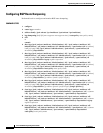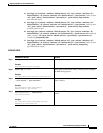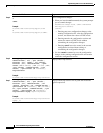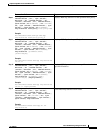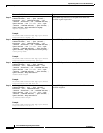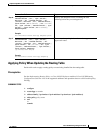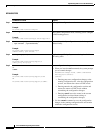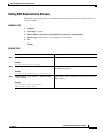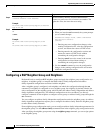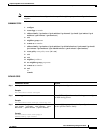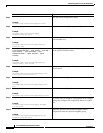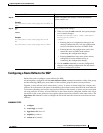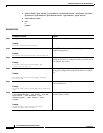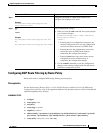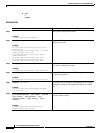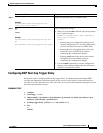
Implementing BGP on Cisco IOS XR Software
How to Implement BGP on Cisco IOS XR Software
RC-74
Cisco IOS XR Routing Configuration Guide
OL-14356-01
Configuring a BGP Neighbor Group and Neighbors
Perform this task to configure BGP neighbor groups and apply the neighbor group configuration to a
neighbor. A neighbor group is a template that holds address family-independent and address
family-dependent configurations associated with the neighbor.
After a neighbor group is configured, each neighbor can inherit the configuration through the use
command. If a neighbor is configured to use a neighbor group, the neighbor (by default) inherits the
entire configuration of the neighbor group, which includes the address family-independent and address
family-dependent configurations. The inherited configuration can be overridden if you directly
configure commands for the neighbor or configure session groups or address family groups through the
use command.
You can configure an address family-independent configuration under the neighbor group. An address
family-dependent configuration requires you to configure the address family under the neighbor group
to enter address family submode.
From neighbor group configuration mode, you can configure address family-independent parameters for
the neighbor group. Use the address-family command when in the neighbor group configuration mode.
After specifying the neighbor group name using the neighbor group command, you can assign options
to the neighbor group.
Step 4
distance bgp external-distance
internal-distance local-distance
Example:
RP/0/RP0/CPU0:router(config-bgp-af)# distance
bgp 20 20 200
Sets the external, internal, and local administrative
distances to prefer one class of routes over another. The
higher the value, the lower the trust rating.
Step 5
end
or
commit
Example:
RP/0/RP0/CPU0:router(config-bgp-af)# end
or
RP/0/RP0/CPU0:router(config-bgp-af)# commit
Saves configuration changes.
• When you issue the end command, the system prompts
you to commit changes:
Uncommitted changes found, commit them before
exiting(yes/no/cancel)?
[cancel]:
–
Entering yes saves configuration changes to the
running configuration file, exits the configuration
session, and returns the router to EXEC mode.
–
Entering no exits the configuration session and
returns the router to EXEC mode without
committing the configuration changes.
–
Entering cancel leaves the router in the current
configuration session without exiting or
committing the configuration changes.
• Use the commit command to save the configuration
changes to the running configuration file and remain
within the configuration session.
Command or Action Purpose



